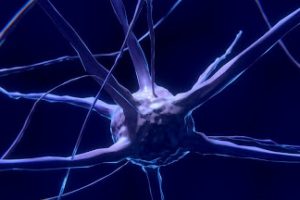
© Shutterstock
From the patterns in the snowflakes to the orbits of the planets around the sun, everything exhibits perfect harmony.
Musa Ahmad Sattar, London, UK – Deputy Science Editor
The universe’s perfect harmony and balance, present in everything from subatomic particles to galaxies, is a mesmerising aspect of its flawless nature that warrants deeper exploration.
The natural world is full of such examples. For instance, the human body is designed with a perfect balance of organs and systems, each performing its unique function to maintain overall health. Similarly, in the animal kingdom, animals are adapted to their environments with remarkable precision, from the shape of their beaks to the length of their limbs. The structure of DNA and the organisation of cells and tissues also exhibit astonishing balance and proportionality, reflecting the laws of physics, mathematics and chemistry that govern biological systems.
The delicate balance and proportionality observed in the formation and behaviour of planetary orbits and galaxies further highlight the flawless nature of the universe.
In the world of art and architecture, there exists a captivating ratio known as the golden ratio, often referred to as the divine proportion. This special mathematical relationship, represented by the letter φ (phi), holds a proportion of 1.618 (to 3 decimal places). It is a ratio of the Fibonacci sequence, which is as follows: 1, 1, 2, 3, 5, 8, 13, 21, 34…so on and so forth, where every new number in the sequence is the sum of the two preceding it. Many artists and architects consider it the most aesthetically pleasing ratio. The magic of the golden ratio has been applied to buildings, paintings, and other art forms as a result of nature’s blueprint.
Imagine a precise ratio that harmonises the different elements within a piece of artwork, an image, or an object – that’s what the golden ratio achieves. It creates visually harmonious and balanced compositions where every detail is evident with all the intricacies of its pattern. It seems to be an innate connection between mathematics and the natural world, suggesting that the universe itself is designed with an inherent sense of beauty and proportionality.
Found in the sizes of various natural objects like seashells, flower petals, and even human faces, this ratio seems to be a universal rule of beauty. When applied, it creates a sense of balance that our minds instinctively find appealing.
The unique balance of natural forces has shaped our planet and its biosphere over billions of years, resulting in the delicate web of ecological, chemical, and physical processes that make our planet hospitable to life. Snowflakes, galaxies, and seashells may seem disparate, but they are all examples of intricate design and structure found in nature.
We can notice the universe’s mathematical balance in how the planets are sized in our solar system. For instance, look at Venus and Earth. Every five times the Earth goes around the Sun, Venus goes around it eight times. The numbers 5 and 8 are part of the Fibonacci sequence, and when you divide 8 by 5, you get the special number 1.6, known as the golden ratio. The same proportions can be observed between the Earth and Mercury.
Similarly, observe how honeycombs, nautilus shells, and sunflowers all display remarkable examples of symmetry and geometry in their natural structures. The hexagonal cells of honeycombs are not only aesthetically pleasing but also highly efficient, allowing for maximum use of space with minimal material. The spiral shape of nautilus shells follows the mathematical equation of the golden spiral, which is also found in the arrangement of seeds in sunflowers. A hawk’s flight pattern matches the golden spiral, seen in its descent angle and direction. Ocean waves are another example of the golden ratio manifesting in nature. Amazingly, this sequence also appears in the human body. For example, the distance from the base of a finger to the wrist is around 1.618 times larger than the previous finger section – like a hidden pattern and this can be observed throughout the human body.
From the spiral shape of the milky way to the building blocks of DNA, scientists are still uncovering more ways the golden ratio influences our world. As William Shakespeare has nicely portrayed in Troilus and Cressida:
‘The heavens themselves, the planets, and this centre,
Observe degree, priority, and place,
Insisture, course, proportion, season, form,
Office, and custom, in all line of order.’
The intriguing concepts of balance and proportionality in the universe reveal its innate beauty, harmony and elegance, providing us with infinite mysteries to explore. But how does nature manage to spontaneously organise itself into intricate patterns without the use of a predetermined blueprint or foresight? Is it not evident that the harmony and balance found in nature are a result of God’s perfect design?
Further Reading:
Hazrat Mirza Tahir Ahmad (rh), Revelation, Rationality, Knowledge and Truth.
Philip Ball, Patterns in Nature: Why the Natural World Looks the Way It Does (UK: University of Chicago Press, 2016).
Samuel Colman, Harmonic Proportion and Form in Nature, Art and Architecture (Dover Publications, 2013).
H. E. Huntley, The Divine Proportion: A Study in Mathematical Beauty (Dover Publications Inc., 1970).
Mario Livio, The Golden Ratio: The Story of Phi, the Extraordinary Number of Nature, Art and Beauty (Headline Review; New edition 2023).
Gary B. Meisner, The Golden Ratio: The Divine Beauty of Mathematics (Race Point Publishing; Illustrated edition 2018).




A very good article with very good examples, yet these just scratch the surface of examples of the golden ratio in the design of creation and its applications by mankind. Thank you very much for the reference to my book (https://bit.ly/goldenratiobook). Learn even more from my free content on the golden ratio at http://www.goldennumber.net and http://www.phimatrix.com.